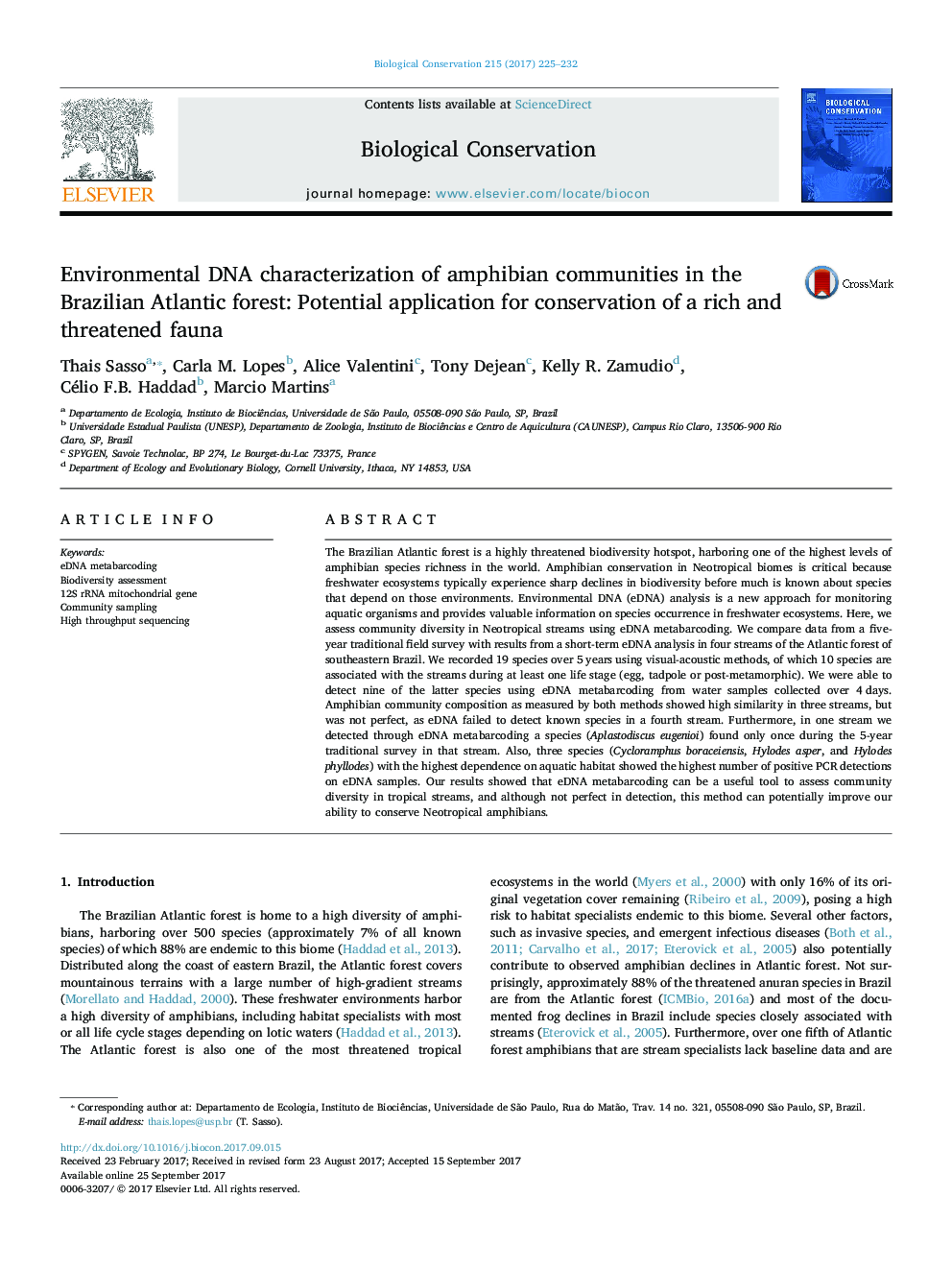| کد مقاله | کد نشریه | سال انتشار | مقاله انگلیسی | نسخه تمام متن |
|---|---|---|---|---|
| 5743032 | 1617890 | 2017 | 8 صفحه PDF | دانلود رایگان |

- We examine the use of eDNA metabarcoding to assess amphibian community composition.
- eDNA metabarcoding results were supported by a 5-year visual and acoustic survey.
- All species detected using eDNA have at least one life stage associated to streams.
- Survey constancy index was positively correlated to the proportion of positive PCR in eDNA analysis.
The Brazilian Atlantic forest is a highly threatened biodiversity hotspot, harboring one of the highest levels of amphibian species richness in the world. Amphibian conservation in Neotropical biomes is critical because freshwater ecosystems typically experience sharp declines in biodiversity before much is known about species that depend on those environments. Environmental DNA (eDNA) analysis is a new approach for monitoring aquatic organisms and provides valuable information on species occurrence in freshwater ecosystems. Here, we assess community diversity in Neotropical streams using eDNA metabarcoding. We compare data from a five-year traditional field survey with results from a short-term eDNA analysis in four streams of the Atlantic forest of southeastern Brazil. We recorded 19 species over 5Â years using visual-acoustic methods, of which 10 species are associated with the streams during at least one life stage (egg, tadpole or post-metamorphic). We were able to detect nine of the latter species using eDNA metabarcoding from water samples collected over 4Â days. Amphibian community composition as measured by both methods showed high similarity in three streams, but was not perfect, as eDNA failed to detect known species in a fourth stream. Furthermore, in one stream we detected through eDNA metabarcoding a species (Aplastodiscus eugenioi) found only once during the 5-year traditional survey in that stream. Also, three species (Cycloramphus boraceiensis, Hylodes asper, and Hylodes phyllodes) with the highest dependence on aquatic habitat showed the highest number of positive PCR detections on eDNA samples. Our results showed that eDNA metabarcoding can be a useful tool to assess community diversity in tropical streams, and although not perfect in detection, this method can potentially improve our ability to conserve Neotropical amphibians.
Journal: Biological Conservation - Volume 215, November 2017, Pages 225-232